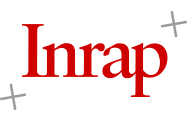
Seals, visual traditions, and material practice : early writing in comparative perspective
Workshop
Vendredi 24 novembre 2023 : 14h30-17h30. MSH Raspail, salle 09.
Samedi 25 novembre 2023 : 9h-17h. Sorbonne : Salle Delmarre, le matin ; Gaston Paris, l’après-midi.
Workshop, org. by Richard Bussmann, Universität Köln & Andréas Stauder, École Pratique des
Hautes Études - PSL
Paris, École Pratique des Hautes Études, 24–25 November 2023 (Fr. pm – Sa.) Early writing has been extensively studied over the past twenty years, including in a series of comparative volumes that cover the emergence and decline of pristine and secondary script systems. The rise of phonetic scripts fell into the formation of elite culture that constituted the core of archaic states, but it developed along distinct lines in each world region. Research has long focused on the ways in which pictorial signs have acquired phonetic properties and how translations and interpretation of early inscriptions can be improved. Recent studies are placing greater emphasis on material contexts of writing and the embedding of writing in wider practices across society. Building on this agenda, the proposed workshop explores the interface of phonetic scripts, visual trajectories, and material practices using seals a key medium for the development of writing in early complex societies.
Seals are cross-culturally embedded in social developments that form one major background to early writing. Sealing is a marking practice like early writing in many places. Seals are one major medium of visual traditions that existed before and alongside early writing. Allowing for the repeated delivery of miniaturized visual forms on a surface, they play a role in the standardization of visual forms and their dissemination across a community of users and in a society in which such visual forms can otherwise be restricted. Seals, moreover, can themselves be early carriers of writing ; the poor legibility of impressed sealing patterns suggests that writing was in practice a form of visual communication, indexical of its agents, rather than just a code to be deciphered.
The workshop sets out to discuss these issues in a comparative perspective, centering on those traditions that display the most productive interaction between seals and incipient or early writing, in Egypt and the wider ancient Near East including the Indus valley and Crete. The
workshop brings together experts in diverse specialisms in these areas with the aim to foster a
dialogue between archeologically, materially and semiotically informed approaches, emphasizing,
whenever possible, ancient actors’ perspectives. Specifically, the workshop seeks to develop agent-based perspectives on the following themes :
- Visual traditions : Early seal inscriptions combine pictorial and phonetic elements, but the
line between the two types of signs is often blurred. Instead of trying to separate the two the workshop seeks to understand how ancient actors have perceived and responded to the openness of signs, how the transition from visual to phonetic was modelled, and how image and sound interpenetrated each other. Most studies project later interpretations into the beginning of early script, but this workshop takes a perspective from the visual traditions that precede early writing. Which elements of that tradition were activated for seals, which ones were not, and which new visual repertory was invented for seals ?
- Material practice : Many studies have focused on the early script as a developing system of signs, sometimes employing semiotic theory, but often following a descriptive approach and ignoring material practices of writing. Sealing practice was integrated in the developing central administrations, but continued operating on other levels, such as for the management of private property, vesting of objects with prestige, and protective purposes when used together with beads and amulets. Sealing differs from handwriting as it does not require writing and reading skills, but sealing patterns still employed a range of images that ancient actors needed to decode. The range of signs known in a given community might have been restricted compared to the entirety of contemporary signs. The workshop therefore looks at the role of seals for the dissemination of visual and written signs across geographic space and society and at their relation to other practices of standardization that have placed seals in a new regime of values and taxonomies.
- Comparative approaches : The workshop compares the origins of seals in Egypt with seals and sealing practice in other early complex societies. The comparative approach will help understand shared trajectories and differences of visual traditions and material practices for the use of seals and the signs used on them. For example, using clay as a medium of communication was common in Mesopotamia for millennia before the cuneiform script was invented, but handwriting on papyrus was more clearly set apart from sealing with clay in Egypt. Both commonalities and differences require explanation.
The workshop is geared towards in-depth understanding and contextualized analysis. We would like this to be a forum for a productive exchange of ideas, approaches, hypotheses and open questions among specialists who do not regularly sit on the same table – archeologists as well as students of ancient writing, across various areas. To make room for such an effective exchange, the time slots for the presentations and discussion will be generous. Participants are invited to discuss individuals seals and sealing contexts as well as questions of modelling and theory.






